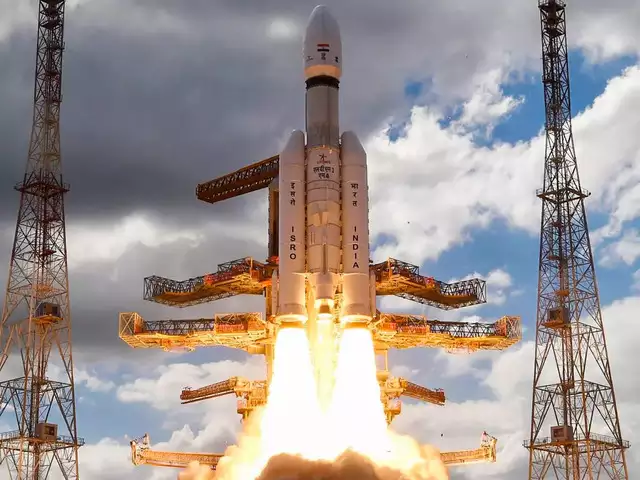Introduction
India’s space exploration efforts have reached new heights with the unveiling of the country’s latest lunar mission, Chandrayaan 3. This ambitious project is a testament to the Indian Space Research Organisation (ISRO)’s commitment to advancing the nation’s scientific and technological capabilities. In this article, we will provide an overview of Chandrayaan 3’s objectives and goals, explore the importance of this mission for India’s space exploration endeavors, learn about the journey from planning to execution, and examine the key technologies and innovations that make this mission a groundbreaking achievement.
For all those preparing for UPSC exams in India, understanding about Chandrayaan 3 becomes extremely important. In this article, we will also delve into the specific details of the mission, providing insights into what it aims to achieve, the scientific research it plans to conduct, and the data it hopes to collect. This section will provide a comprehensive understanding of Chandrayaan 3 and its significance for India.
So, let’s embark on a journey to discover more about Chandrayaan 3, India’s newest space exploration mission.
Chandrayaan 3 launch date
Chandrayaan-3 was launched on 14 July 2023, at 2:35 pm IST as scheduled, from Satish Dhawan Space Centre Second Launch Pad in Sriharikota, Andhra Pradesh, India. The spacecraft entered lunar orbit on 5 August 2023.
The Importance of Chandrayaan 3 for India’s Space Exploration
Chandrayaan 3 is a crucial mission for India’s space exploration endeavors. The Indian Space Research Organisation (ISRO) has designed this mission to achieve specific scientific goals and expand the country’s technological capabilities.
The Chandrayaan 3 mission aims to conduct surface exploration of the Moon and analyze its topography, mineralogy, and exosphere. Through this mission, India hopes to gain a better understanding of the Moon’s origin and evolution, as well as its potential as a source of resources for future space exploration.
ISRO has been at the forefront of India’s space exploration efforts, and Chandrayaan 3 is a testament to the organization’s commitment to unlocking the mysteries of the universe. This mission serves as a stepping stone for future space missions and positions India as a leader in space exploration.
Understanding the Objectives of Chandrayaan 3
Chandrayaan 3 is a lunar mission launched by the Indian Space Research Organisation (ISRO) with the primary objective of conducting scientific research on the moon. The mission aims to continue the work started by its predecessor, Chandrayaan 2, which was able to confirm the presence of water molecules on the lunar surface.
The objectives of Chandrayaan 3 are vast and ambitious, covering topics such as the lunar surface’s mineral composition, the possibility of finding water ice deposits, the origin and evolution of the moon, and its geologic processes. Equipped with advanced instruments and a robust payload, Chandrayaan 3’s primary goal is to gather data and conduct research that will help us better understand the moon’s composition, geology, and environment.
The payload of Chandrayaan 3 is composed of several scientific instruments, including a camera, a spectrometer, a laser-induced breakdown spectroscope, and a seismic instrument. These instruments will allow Chandrayaan 3 to study various aspects of the lunar surface and gather vital data that will aid in future moon missions.
The Objectives of Chandrayaan 3
| Objective | Description |
|---|---|
| Mineral composition | Study the mineralogy of the lunar surface using spectroscopy and X-ray fluorescence techniques |
| Water ice deposits | Look for evidence of water ice deposits in the polar regions of the moon |
| Lunar origin and evolution | Study the moon’s surface and geology to gain insight into its formation and evolution |
| Geologic processes | Investigate the lunar surface for evidence of geological activity and processes, such as impact cratering and volcanism |
Chandrayaan 3 is an exciting mission that builds on the successes of its predecessor and has the potential to significantly enhance our understanding of the moon’s composition, geology, and environment. Its objectives are diverse and ambitious, and its payload is designed to collect valuable data that will help shape future moon missions.

The Journey of Chandrayaan 3: From Planning to Execution
Chandrayaan 3 is the result of years of planning and development by the Indian Space Research Organisation (ISRO). The mission, which was announced in November 2020, is a follow-up to India’s highly successful Chandrayaan 2 mission and aims to further expand the country’s capabilities in lunar exploration and research.
ISRO faced several technical challenges during the planning stages of Chandrayaan 3, including designing a spacecraft capable of landing safely on the lunar surface. After several rounds of simulations and tests, ISRO engineers were able to devise a landing system that uses a soft landing technique, allowing the spacecraft to land without causing any damage.
| Objective | Details |
|---|---|
| Making scientific discoveries | Chandrayaan 3 will carry several scientific instruments and equipment that will help explore the lunar surface and collect data on its composition, structure, and mineralogy. |
| Advancement in space technology | The mission is expected to push the boundaries of spacecraft design and engineering, with key innovations in communication systems and scientific instruments. |
| Showcasing India’s capabilities | Chandrayaan 3 will demonstrate India’s growing technological prowess and capabilities in space exploration, further solidifying its position as a global space power. |
The design and development of Chandrayaan 3 was a collaborative effort involving many institutions and partners, including the Indian Academy of Sciences, the Indian National Science Academy, and the Indian Space Research Organisation Satellite Centre. The mission is expected to be executed in the near future, with ISRO aiming to launch the spacecraft in 2022 or 2023.
The success of Chandrayaan 3 is crucial for India’s space exploration aspirations and will pave the way for future missions to explore the lunar surface and beyond. With the rapid advancements in technology and the growing interest in space exploration, Chandrayaan 3 represents an exciting new chapter in India’s space journey.
Key Technologies and Innovations of Chandrayaan 3
Chandrayaan 3 is a mission that utilizes cutting-edge technology to explore the lunar surface. Some of the key technological advancements that make this mission possible include:
| Spacecraft Design | The spacecraft for Chandrayaan 3 has been designed to be more robust and efficient than its predecessors, with improved thermal management and power generation systems. |
|---|---|
| Communication Systems | The mission’s communication systems have been upgraded to enable high-speed data transmission between the spacecraft and ground stations, with a stronger signal and better reliability. |
| Scientific Instruments | The payload of Chandrayaan 3 includes advanced scientific instruments, such as a high-resolution camera for mapping the lunar surface, a spectrometer for analyzing the composition of the lunar regolith, and a seismometer for studying the moon’s internal structure. |
These technological innovations will enable Chandrayaan 3 to conduct more precise and comprehensive scientific research on the moon’s surface, expanding our knowledge of its geology, mineralogy, and evolution. With this mission, India’s space exploration capabilities are poised to reach new heights.
Conclusion
In conclusion, Chandrayaan 3 is a crucial mission for India’s space exploration endeavors. With its advanced technologies and innovative instruments, this mission has the potential to unlock groundbreaking discoveries about the moon and the universe beyond. The hard work and collaborative efforts of the Indian Space Research Organisation (ISRO) have made it possible for Chandrayaan 3 to embark on its journey of exploration. As India’s technological capabilities continue to advance, Chandrayaan 3 serves as a testament to the country’s commitment to space exploration and scientific research. It is a source of pride for all Indians, and we eagerly await the advances and scientific breakthroughs that this mission will bring. In the future, Chandrayaan 3 could pave the way for even more groundbreaking missions, both to the moon and beyond. As we continue to explore and learn about the universe, Chandrayaan 3 will remain a significant milestone on our journey of discovery.
FAQ
Q: What is Chandrayaan 3?
A: Chandrayaan 3 is India’s latest lunar mission.
Q: What are the objectives of Chandrayaan 3?
A: The objectives of Chandrayaan 3 include conducting scientific research, collecting data, and advancing India’s technological capabilities.
Q: Who is executing the Chandrayaan 3 mission?
A: The Indian Space Research Organisation (ISRO) is executing the Chandrayaan 3 mission.
Q: What key technologies and innovations are used in Chandrayaan 3?
A: Chandrayaan 3 incorporates advancements in spacecraft design, communication systems, and scientific instruments.
You can more about information by Chandrayaan 3 clicking here
















